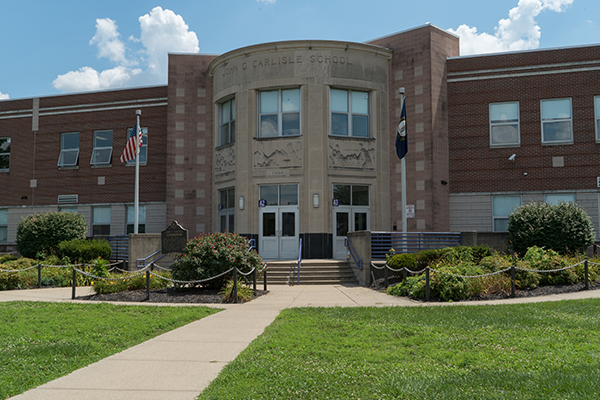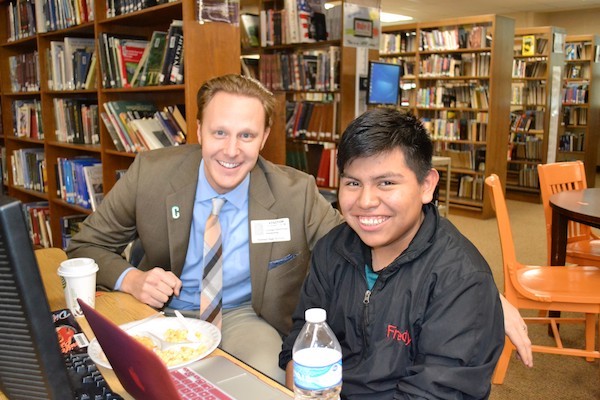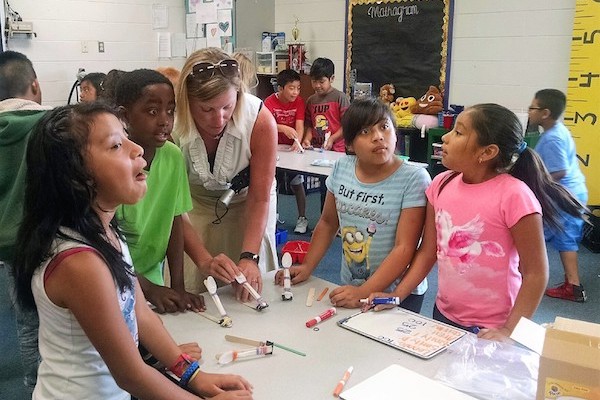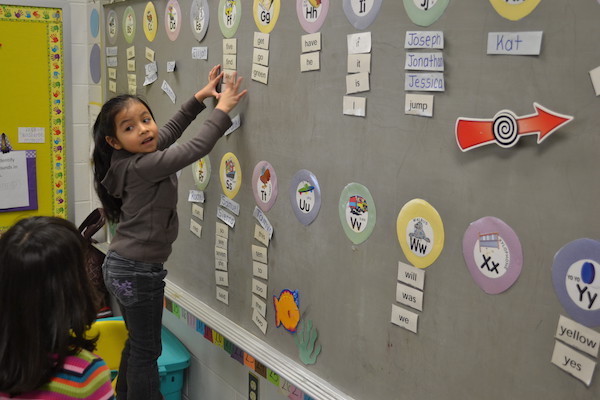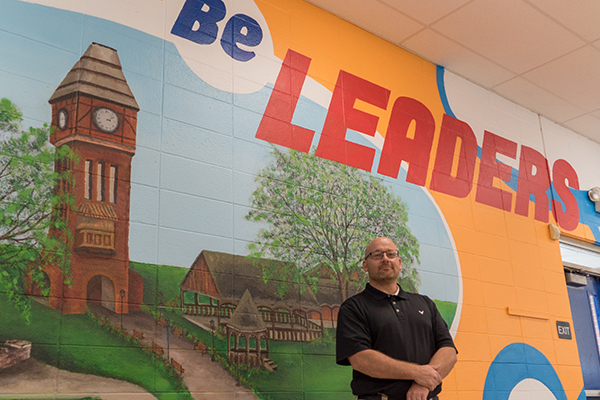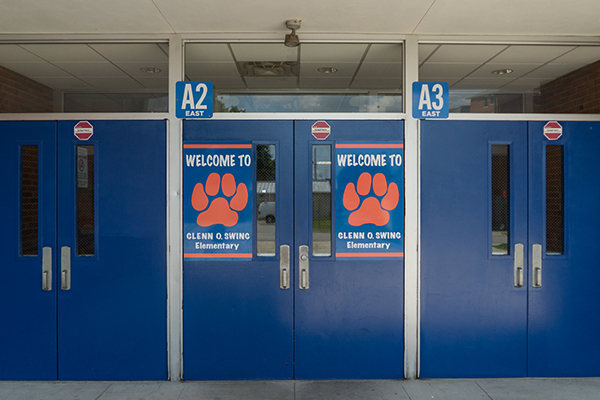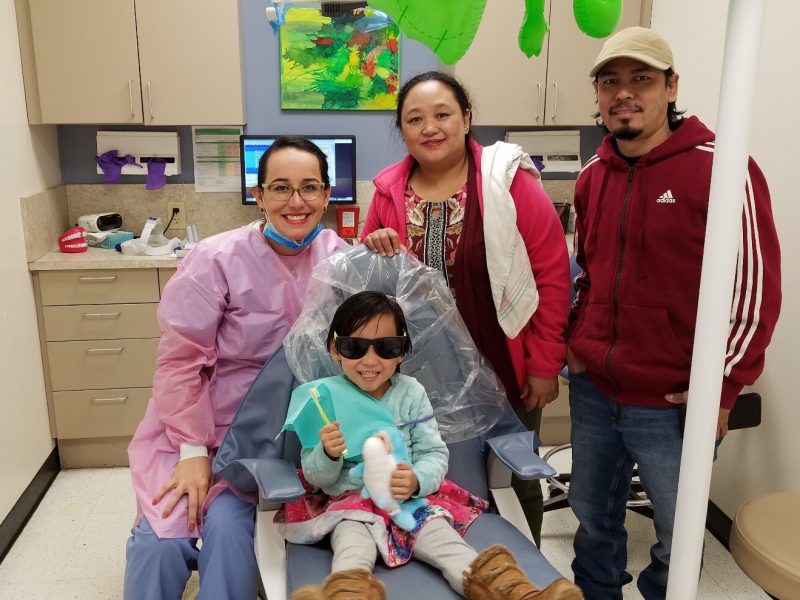Minding the gap: Poverty meets a fierce enemy in Covington’s public education system
Poverty is a multi-faceted and widespread challenge to learning in Covington's public schools. But far from lamenting, leaders are tackling the problem head-on, with strategic programming and a passion for student success.
It’s hard to argue that poverty does not adversely affect education. Would you agree that a child who has the burden of worrying about where she is going to receive her next meal, or a child who doesn’t know where he is going to sleep that night, may have increased difficulty learning their ABCs?

“If we think about Maslow’s hierarchy of needs,” says John Scott, community relations program manager at Cincinnati Children’s Hospital Medical Center, “There are lower-order needs such as food, clothing, shelter, sleep and safety that must be met before we move on to higher order needs like achievement, confidence and purpose. For families living in poverty, the most rewarding goals are things such as having a meal to eat, a place to lay their heads and be protected from harm. Without such ‘luxuries’ being in place, a lack of focus or prioritization on education is of no surprise.”
It has been just over 50 years since we, as a nation, declared our war on poverty just up the road in Athens. It was there that President Lyndon B. Johnson delivered his 1964 State of the Union Address, wherein he convinced a nation that, “One thousand dollars invested in salvaging an unemployable youth today can return $40,000 or more in his lifetime.”
If we fast-forward to the present, we still find institutions in place that not only institutionalize poverty, but also facilitate its grasp on our society.
Public education is one of those institutions.
Schools in low socioeconomic areas have traditionally been underfunded when compared to schools in higher-income districts. These poor school districts battle some of the same issues as the neighborhoods in which they are located: poverty, violence and a lack of resources and supportive services.
This set of circumstances makes it apparent that those who are born into poverty have an upward battle when trying to get out of poverty. This could not be better exemplified than by looking at children battling poverty in Covington.
Covington is a city where poor children from public housing and modest single- and multi-family homes make up most of the school population, and where close to three-quarters of students are eligible for free or reduced lunches.
I was once one of those Covington students.
“I’m not sure that you can handle the coursework,” I remember my high school counselor at Holmes saying to me when I registered for classes for the first time in the summer of 1991. I was transferring from a college prep school where I’d skipped seventh and eighth grades, and my mother was attempting to put me in advanced placement classes.
Maybe it was because I was Black. Maybe it was because our income was lower than most. Or maybe the counselor just did not have room for another student in advanced classes. Whatever the case, I was glad that my mother had the fortitude not to take the counselor’s suggestion as an insult; instead, she emphatically urged her to place me in appropriately challenging classes.
And she did it at just around the right time.
It was at a time when education policy in the United States was taking a turn in a new direction. I was lucky enough to enter into Kentucky’s public education system just one year after the Commonwealth produced the most comprehensive overhaul of public education the nation had ever seen.
Prompting the Commonwealth’s cry for help was its last-place ranking in a nationwide poll of high school graduates. In 1980, just over half of Kentucky adults had high school diplomas.
Hearing the nation’s cry for change, the 1990 Kentucky Education Reform Act, or KERA, introduced higher standards, more money and a reallocation of resources that addressed the outside influences affecting how children — specifically those living in low-income situations — live, learn and grow.
Because of these reforms over 20 years ago, current Covington educators have been reaping the benefits. Local administrators have increasingly recognized that stresses related to poverty, like hunger and chronic illness, are large barriers to learning. But the road to reform did not come easy.
Shortly after KERA was enacted and reform began to take place, there was little definitive evidence of its value, causing its reception into public schools to be lukewarm at best. Unhappiness with portions of the refor,m such ungraded primary schools and a new testing system, almost derailed the plan before it left the station.
But there were many teachers who embraced the cause.
During my time at Holmes, I had many teachers who went above and beyond to help their students succeed. Dara (Parks) Hale was one of those teachers. She was the kind of teacher you wish you had. She was funny, sharp and simply had a way of making students “get it.” Although she was my math teacher, she came from a music background, and during my sophomore year, she found out that I had an interest in going to a summer vocal music camp at Morehead State University. She also knew that I had no way to get to the audition.
Outside of school hours, she helped me practice my audition song, drove me down to Morehead for the audition and served as my accompanist on the piano during the audition.
“Our children are better off since the reform,” says lifelong Covington resident and former Covington Independent Public Schools board member Pamela Mullins.
Mullins, who was a member of the board during the implementation of KERA, says the bill did not fully address the entire learning experience. “Because of KERA, the school district’s per-student dollar allocation was increased. But the reforms did not change the overall economic situation of the students, so the stigma of poverty still remained for many.”
Glenn O. Swing Elementary in Covington works with many of the district’s low-income students. A stunning number of homeless and poverty-stricken students season the school’s population. In many cases, schools working with students who are in the midst of battling poverty fall low on the totem pole when it comes to student test scores. But not Glenn O. Swing. When test scores appeared on the Kentucky Department of Education’s website, this urban school stood out and exemplified an exception to the rule.
Glenn O. Swing principal Scott Alter works hard to make sure his students succeed. “We have an entire team that helps students work through some of the obstacles that poverty presents. Because of this, we have been labeled a distinguished school for the past four years.”
Throughout the 2014-2015 and 2015-2016 academic school years, Covington Independent Public Schools were in the lower percentile of public school districts in the Commonwealth, according to the KDE’s Annual Report Card. Despite this, Glenn O. Swing, under the direction of Alter, has scored an average of 86 (out of 100) over the aforementioned school years, while the other four Covington elementary schools scored an annual average of 62.
Alter offers some possible reasoning for these results: “Outside of our students who work really hard for us and our outstanding teachers, the fact that we opted to incorporate a behavior coach in lieu of an extra teacher, has been a great help to our success.”
At Glenn O. Swing, behavioral coaches are part of a seven-member team that includes a counselor, family resource coordinator, school psychologist, school nurse, mental health counselor and community learning center coordinator. The behavioral coach works with the student, their teacher and their family to provide proactive, targeted support and coaching within the classroom.
Many in the community feel that all Covington schools are attempting to tackle the problem of poverty.
In addition to being employed at Children’s Hospital, Scott resides in Covington and has three children in the public school system. He, along with many parents, has helped Glenn O. Swing to succeed. Scott has been heavily involved, serving on the Superintendent’s Parent Advisory Council. In addition, he serves as a representative to the State of Kentucky Commissioner’s Parent Advisory Council.
“l do my best to make myself present within Covington Independent Schools,” says Scott. “I have the opportunity to connect with children directly and give them the encouragement, hope and support to help them stay in school and become successful.”
Further, Scott explains, Covington schools are making strides in their efforts to tackle the problems related to poverty in education. “Covington Independent Public Schools is currently implementing initiatives that address poverty. One way is that they are helping kids and families meet their basic need for food by providing free meals to children within the schools. In addition, students in high school are being prepared to enter career fields with jobs ready to employ individuals with the skills and talents necessary for them to achieve.”
Many other institutions working with students in Covington also feel that more resources are needed to serve as a catalyst.

Stacie Strotman, executive director of the nonprofit Covington Partners and a product of Covington Independent Public Schools, works tirelessly to give students opportunities to succeed outside of normal school hours. Covington Partners collaborates with community stakeholders including students, families and partner organizations to help Covington students achieve success.
“We have to do more,” Strotman says. “If I had an unlimited budget, I would throw it into creating a fortified network of supportive services like mentoring and afterschool programs that incorporate both the student and the family.”
“Poverty makes it difficult to learn,” adds Natasia Malaihollo, founder and CEO of Wyzerr, a Covington-based customer engagement startup. “You can’t learn effectively if you’re starving or not sleeping well at night. We here at Wyzerr hire high school students in Covington for tech internships that pay substantially higher than minimum wage. We train these interns on all things tech and software development, expose them to a lot of really cool projects and customers and try to include some mentoring around homework and college applications in the process.”
I grew up on the west side of Covington, where the sound of trains passing close by and the busy fire station at the corner of 15th Street and Holman lulled me to sleep at night. I grew up riding bikes in the streets all day and reading books at night. A nerdy kid. Maybe it made a difference being raised by a mother who cared about her child’s education and was well-armed to help with that education. My childhood of learning, while struggling with the obstacles that came from not always having a lot of money, not only helped me to succeed in high school, but also helped my mother to convince that school counselor not to simply brush a poor child to the wayside.
With that being said, poverty is not productive for our society. Its deteriorating effects attack our economy, our future and our region’s forward progress. In Covington, the school district, along with many supportive community partners, is bucking the trend and attempting to holistically address it with respect to education.
The Northern Kentucky Fund of the Greater Cincinnati Foundation is proud to underwrite Soapbox’s On the Ground: Covington series. The Northern Kentucky Fund believes that highlighting the successes and challenges in our community fosters effective dialog and action, creating communities where everyone can thrive. Other On the Ground partners include The Center for Great Neighborhoods, which is working collaboratively toward community transformation with series sponsor Place Matters partners LISC and United Way of Greater Cincinnati. Data and analysis is provided by The Economics Center.

